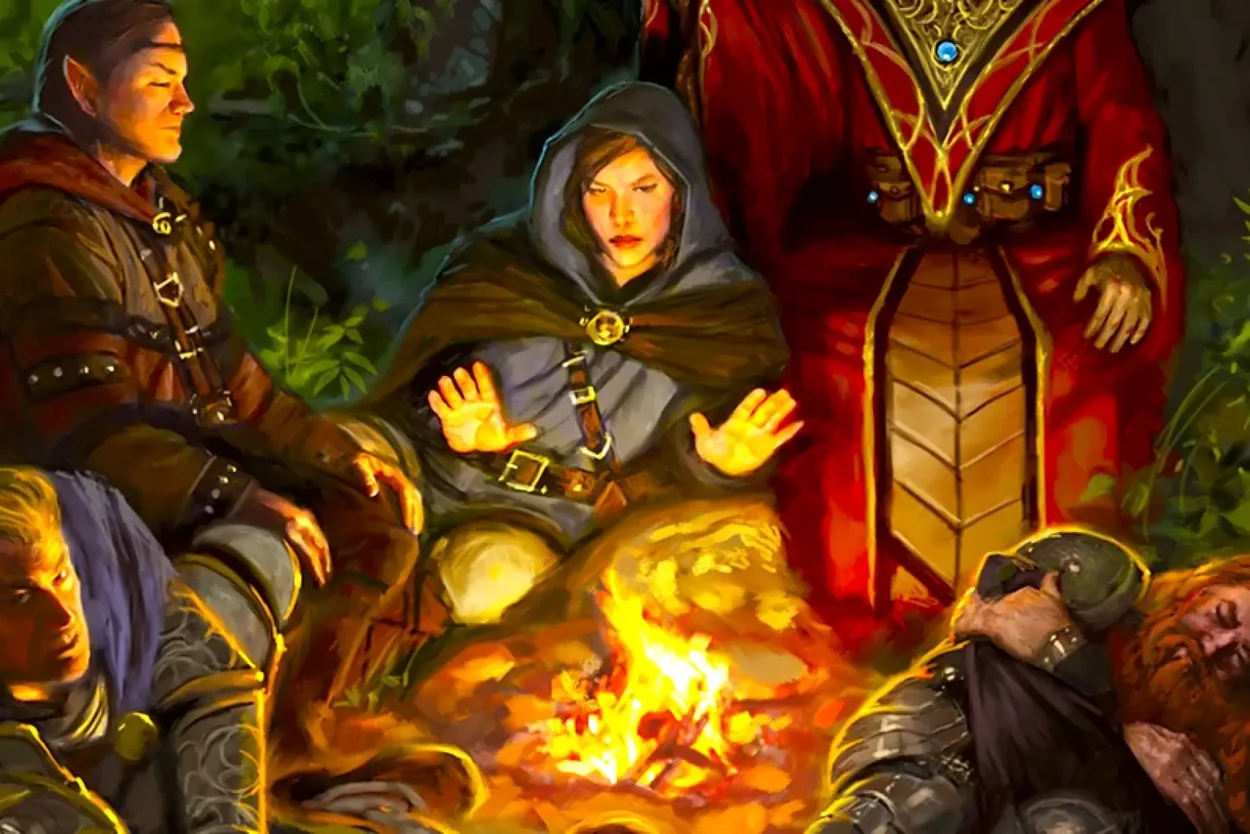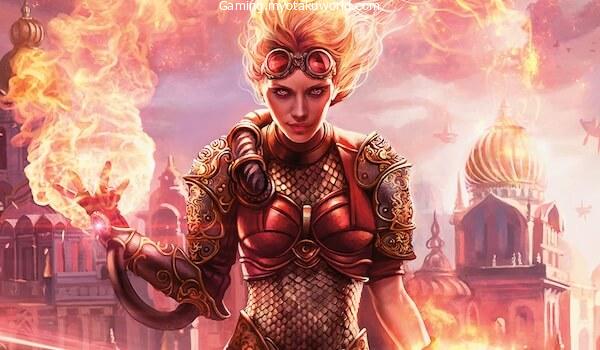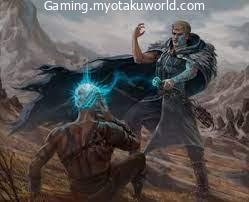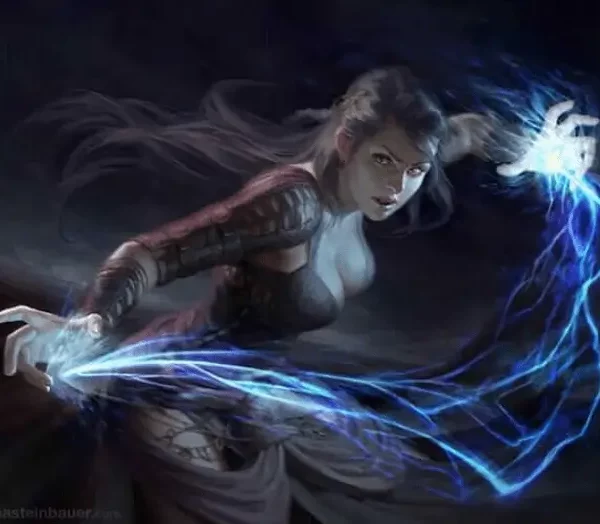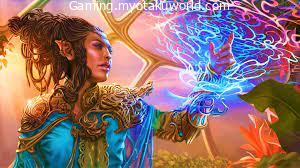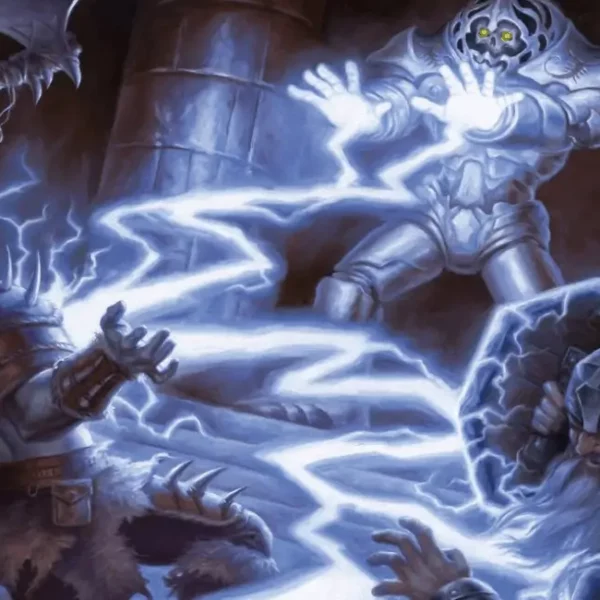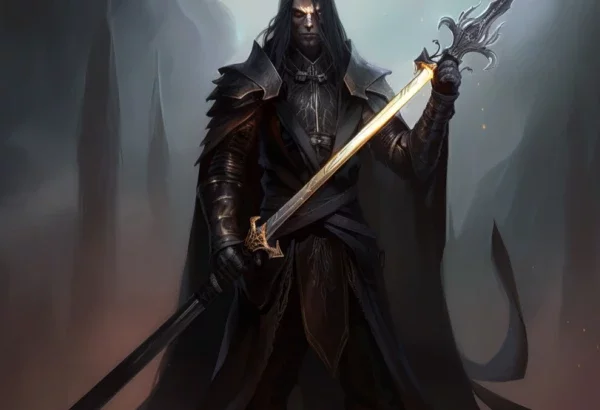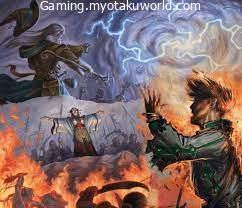“A shrill howl echoes around you as you continue your trek up the steep mountainside. The bitter winds buffet against your skin and three straight days of travel have left you weary. You feel your knees wobble underneath you with each step forward, threatening to give out at any moment.“
In Dungeons & Dragons 5th Edition, getting tired is a very hard mechanic to get used to. But it has a few things that make it hard for new Game Masters and players to understand.
What is being tired? How does it work? Why does it happen? How can it be fixed?
This article tells new players everything they need to know about the Exhaustion rules in D&D 5e.
Let’s start things off by explaining what Exhaustion is in D&D 5e.
- 5e Exhaustion Explained
- Levels of Exhaustion in 5e
- Exhaustion Level 1: Ability Checks
- Exhaustion Level 2: Halved Movement Speed
- Exhaustion Level 3: Attack Rolls & Saving Throws
- Exhaustion Level 4: Halved Maximum Hit Points
- Exhaustion Level 5: Zero Movement Speed
- Exhaustion Level 6: Death
- What Causes Exhaustion in D&D 5e?
- Exhaustion Causes: Adventuring
- Not Quiet
- Not enough food and/or water
- More than eight hours without stopping
- Chasing
- Extreme Climates
- More than an hour of swimming
- Taking more than eight hours to row a boat
- Freezing Water
- Environmental Effects
- Trapped Under Debris
- Exhaustion Causes: Spells
- Dream
- Sickening Radiance
- Tenser’s Transformation
- Wish
- Exhaustion Causes: Monster Abilities
- How to Remove Exhaustion in 5e?
- Removing Exhaustion: Resting
- Removing Exhaustion: Spells
- Removing Exhaustion: Magic Items
- Exhaustion Immunity in 5e
- FAQs
- Final Words
5e Exhaustion Explained
In D&D 5e, being tired is a special condition. It shows how much adventuring or magic has hurt your player’s character physically.
Basically, your character gets tired when they work too hard or when something strange and magical happens to them.
The Player’s Handbook talks about Exhaustion on page 291:
Some special abilities and environmental hazards, such as starvation and the long-term effects of freezing or scorching temperatures, can lead to a special condition called exhaustion.
DnD Beyond | Basic Rules – Appendix A: Conditions
The mechanic of being tired is fun. But because it is a bit complicated and sometimes hard to keep track of, it is often forgotten.
In D&D 5e, the rules for Exhaustion are broken down into three parts that are easy to remember:
- Exhaustion Levels
- What Causes Exhaustion
- How to Fix Exhaustion
Let’s start with the part that is more mechanically sound: exhaust levels.
Levels of Exhaustion in 5e

In 5e, there are six levels of exhaustion, each of which is worse than the last. Each one makes a creature’s life harder in a different way than the last.
So, the more tired a character gets, the less they can do until they finally pass out from being too tired.
So, in D&D, being tired isn’t a one-time thing like the other conditions. Most other conditions in 5e are either good or bad. For example, the Grappled condition either affects you or it doesn’t.
If your character doesn’t do anything about being tired, it will get worse.
But in Dungeons & Dragons, what are the different levels of exhaustion?
As I said, there are six levels of exhaustion in D&D. Each one makes adventuring harder and harder until your character dies at the end of the last level.
Here is a handy table about exhaustion that you can use as a guide.
| D&D 5e Exhaustion Table | |
|---|---|
| Exhaustion Level | Exhaustion Effect |
| 1 | Disadvantages of Ability Checks |
| 2 | Movement Speed is Halved |
| 3 | Disadvantages of Attack Rolls & Saving Throws |
| 4 | Hit Point Maximum is Halved |
| 5 | Movement Speed Reduced to Zero |
| 6 | Death |
Let’s break each of these down so you see how it affects your character.
Exhaustion Level 1: Ability Checks
In D&D, the first level of Exhaustion makes all of your Ability Checks worse.
This level mostly affects rolls that have nothing to do with combat, since it doesn’t change your Attack rolls or saving throws. So, when you have Exhaustion level 1, you have a disadvantage on any skill check you make.
To climb a cliff, do you need to make a Strength (Athletics) check? Disadvantage. Using an Intelligence (Arcana) check to try to remember something about a strange book your group found. Also, disadvantages.
You agreed to keep watch even though you were tired, and now your Game Master wants you to do a Wisdom (Perception) check? The disadvantage, disadvantage, disadvantage.
Also, if you’re trying to Grapple or get out of a grappling effect and the ability doesn’t call out a saving throw, you make those rolls at a disadvantage. So, even at level one, Exhaustion can be useful in some situations.
Exhaustion Level 2: Halved Movement Speed
In 5e, the second level of exhaustion makes you move half as fast as before.
When you have two levels of Exhaustion, it slows you down. Even though this is likely to be the most annoying in battle. But it also affects how quickly your group travels.
If you’re going half as fast as everyone else, you’re slowing down the party. If you need to get somewhere quickly, you’re a bother.
Not trying to make it sound less fun. But, it presents a unique challenge to your group.
Most likely, second-level exhaustion hurts melee fighters the most. If they can’t move fast enough to catch up with their enemies, they aren’t as good.
Exhaustion Level 3: Attack Rolls & Saving Throws
At the third level of Exhaustion, both Attack rolls and Saving Throws are made harder.
Every roll your character makes is a lot harder when they are at this level of exhaustion.
At this point, your character is so worn out that they can’t fight or go on adventures as well as they used to.
Any and all attacks (even spell attack rolls) get rolled at disadvantage. And if an ability, spell, or trap forces them to make a saving throw, that roll is also made with a disadvantage.
Also, guess what happens if your character gets knocked out and starts making death saves? When you have level 3 Exhaustion, you also make death-saving throws at a disadvantage.
Exhaustion Level 4: Halved Maximum Hit Points
When you reach level 4, your maximum Hit Points are cut in half.
This level of Exhaustion doesn’t just take away half of your hit points. No, it’s much worse than that.
If you cut your maximum hit points in half, you can only heal up to half of them at any time. This makes it very hard for any character to stay alive. When you only have half of your maximum health, every hit is that much worse.
Let’s look at a specific case. Even if you had a 4th-level Barbarian with a Constitution score of 18 and rolled max hit points by some miracle, your Hit Point Maximum would still be 63.
When there are four levels of Exhaustion, that number drops to 31. For a 4th-level combat-focused front-line class, that’s a huge disadvantage. Even with the damage resistance of the Barbarian’s Rage ability.
Exhaustion Level 5: Zero Movement Speed
At the fifth level of Exhaustion, your character can no longer move at all.
All done.
If you’re so tired that you haven’t been able to get better for so long, you can’t even move. Your character gets so tired and worn out that they can’t move on their own anymore.
It’s clear that this is a big problem for any character. No matter what class you are in. And the last level of Exhaustion is the end, so this is the make-or-break moment.
Exhaustion Level 6: Death
When a creature gets to the sixth level of Exhaustion, it dies.
There’s no more to say.
There is no way to stop it. Death doesn’t help. No recovery.
When your character has six levels of Exhaustion, they just die. At this point, the only way to get better is through resurrection magic.
Now, remember that each level of Exhaustion builds on the ones that came before it. If you have two levels of Exhaustion, you have a disadvantage on all Ability Checks and can only move at half speed.
With all of this in mind, you might be wondering how you even get levels of Exhaustion in D&D 5e. So, let’s take a look at some of the ways your character could be tired.
What Causes Exhaustion in D&D 5e?

In 5e, spells and features rarely cause someone to be tired. Most of the time, a creature gets tired because it works harder than it should.
Unlike some other conditions, Exhaustion doesn’t usually happen when a creature is directly attacked. Yes, there are spells and traits that give a creature a level of Exhaustion.
But exploring or traveling is the most common thing that makes people tired.
So, there are three main types of situations that add to the level of exhaustion:
- Adventuring
- Spells
- Monster Abilities
Let’s start with the most common thing that makes people tired: going on adventures.
Exhaustion Causes: Adventuring
Monsters and traps are not the only dangers in a D&D world. Exploration and travel are also dangerous.
Extreme weather, not having enough food or water, and not getting enough rest all lead to exhaustion.
Most people get tired in D&D 5e when they are adventuring or traveling and not in combat.
The funny thing about this mechanic is that what causes Exhaustion is really up to your Game Master.
If they think that making a certain choice or going into a certain area will make them tired or at least force them to make a saving throw, that’s up to them.
Still, the different D&D sourcebooks list several things that can cause Exhaustion.
Not Quiet
If your character doesn’t take a long rest, they must make a Constitution saving throw or take a level of Exhaustion.
Not enough food and/or water
If your character doesn’t eat for 3 + their Constitution modifier minutes, they get a level of Exhaustion. Your character also needs to drink a gallon of water every day (two gallons while in hot weather). If they only drink half, you must make a Constitution save. If they drink less than half a gallon, they automatically take a level of Exhaustion.
More than eight hours without stopping
If your character doesn’t stop for eight hours and keeps traveling, they must make a Constitution saving throw for each hour after the first eight. If they fail, they gain a level of Exhaustion.
Chasing
During a chase, your character gets a level of Exhaustion if they work harder than they usually can. On page 252 of the Dungeon Master’s Guide, it says that during a chase, a creature can use the Dash action up to 3 times plus their Constitution modifier.
But every time they do this, they have to pass a Constitution save or take one level of Exhaustion.
Extreme Climates
Creatures that aren’t used to living in places with extreme weather (like frozen tundras, hot deserts, tall mountains, etc.) could get Exhaustion if they stayed in these places for too long.
But if your character has a special way of dealing with the weather, this wouldn’t affect them. For example, tie flings wouldn’t be as affected by the heat of a desert (unless the heat is very oppressive) because they are resistant to fire damage, and goliaths wouldn’t be affected by the high altitudes of the tower mountains because they are Mountain Born.
More than an hour of swimming
If your character swims for more than an hour, they must make a Constitution save. If they fail, they gain a level of exhaustion.
Having a swim speed makes the time go up to eight hours. Also, it takes four hours to swim at a depth of 200 feet.
Taking more than eight hours to row a boat
If your character rows a boat for more than eight hours straight, they need to pass a Constitution save or take one level of Exhaustion, just like when they travel nonstop.
Freezing Water
Your character could get Exhaustion from falling into cold water. The catch is that this would only hurt things that aren’t immune or resistant to cold damage.
Environmental Effects
Some environments have strange effects that can make your character lose strength. There are a lot of supernatural effects on the environment in Tasha’s Cauldron of Everything.
For example, there are haunted areas that literally drain the energy from creatures and incomplete demi-planes that cause psychic dissonance. Both of these effects on the environment can make a creature feel tired.
Trapped Under Debris
Avalanches became a new environmental hazard because of Tasha’s Cauldron of Everything. If a creature gets buried by an avalanche and can’t get out, it will eventually run out of oxygen and suffer from Exhaustion. This idea could be used if you were stuck under any kind of trash for a long enough time.
Exhaustion Causes: Spells
In 5e, there aren’t that many spells that make you tired. But there are a few ways you can use magic to make a creature tired.
You might think there are spells that can make a target tired. But that’s not what’s going on at all. In 5e, there are only four spells that make someone tired.
Even so, only three spells directly say that Exhaustion is one of their effects or side effects. The last one is more of a guess.
I think it’s because of two things.
First of all, being tired isn’t always helpful. It really only helps you if your enemy has a lot of Exhaustion.
If you only force the first level, you won’t get much out of it. So, you’d have to cast a spell over and over again for it to be worth your time.
Second, if you were able to use Exhaustion multiple times in a short amount of time, it would be way too strong.
Once a creature has three levels of Exhaustion, it has a disadvantage on all rolls and can only move at half its normal speed.
That’s a very bad thing. So, it can’t be too easy to use a spell to make someone tired. If not, the mechanic would be way too strong.
Keeping this in mind, you can see why there aren’t that many spells that cause Exhaustion. But that doesn’t mean they aren’t real.
In D&D 5e, there are four spells that can cause Exhaustion. They are:
- Dream
- Sickening Radiance (XGtE)
- Tenser’s Transformation (XGtE)
- Wish
Now, two of these come from D&D’s Basic Rules and the other two come from Xanathar’s Guide to Everything. So, let’s talk about each one as thoroughly as I can.
Dream
One of the most direct ways to make another creature tired is to use the dream spell. Basically, the spell lets you change a creature’s dreams while it sleeps.
It can cause Exhaustion by preventing the creature it’s aimed at from getting a full night’s sleep by making their dream into a terrible nightmare.
Since a creature must take a long rest every 24 hours or start rolling Constitution saves against Exhaustion, the dream spell is one of the easiest ways to cause Exhaustion outside of combat.
Sickening Radiance
The book Xanathar’s Guide to Everything is the source of Sickening Radiance. In general, this spell has an effect area.
A creature in the area of effect must make a Constitution saving throw if it doesn’t want to take damage from the light and gain a level of exhaustion. This spell is one of the few ways players can make themselves tired while in combat.
Tenser’s Transformation
This spell doesn’t cause Exhaustion as much as it gives the caster a level. The book Xanathar’s Guide to Everything is where Tenser’s change comes from. The person who casts this spell can pretty much improve their fighting skills.
It gives them more hit points, lets them use a wider range of weapons and armor, and makes their weapon attacks stronger. The downside is that when the spell is over, you have to pass a Constitution save or get a level of Exhaustion.
Wish
The wish spell doesn’t say directly that you can make another creature tired. But since the way the spell is written is meant to be open-ended and encourages creative uses, it’s not out of the question that you could use it to make someone tired.
Exhaustion Causes: Monster Abilities
In D&D 5e, some monsters have skills that make other creatures tired.
Like spells, there aren’t that many Exhaustion-effect monsters in D&D. Also, none of these creatures come from the Basic Rules or the Monster Manual. If you want to use them, you’ll have to look for other sourcebooks.
Even though these creatures can cause Exhaustion, they work a lot like the few spells that can do the same thing.
They usually involve some kind of roll, and you can only use them a certain number of times. So, running these creatures as a way for player characters to gain levels of Exhaustion is still a bit hard.
Anyway. Here are the five creatures in D&D 5e that can cause Exhaustion without further ado:
- Gingwatzim (Candlekeep Mysteries (CKM))
- Jade Tigress (CKM)
- Soul Monger (Mordenkainen’s Tome of Foes (MToF))
- Sibriex (MToF)
- Kalaraq Quori (Eberron: Rising from the Last War)
Each of these creatures has a skill that either directly adds a level of Exhaustion or has a long-term effect that adds more levels over time.
How to Remove Exhaustion in 5e?
Alright. Now you know what D&D’s “Exhaustion” means and what makes it happen. But how can Exhaustion be fixed?
Even though there are a lot of ways to get Exhaustion, there aren’t that many ways to get rid of it. Often, your character needs to take a break and rest before they can feel like themselves again. But there are a few ways to fix Exhaustion more quickly.
In 5e, there are three main ways to get rid of Exhaustion:
- Resting
- Spells
- Magic Items
Even so, these three ways to fix being exhausted are pretty limited.
So, let’s look at each of these ones by one, starting with the oldest: taking a long nap.
Removing Exhaustion: Resting
In D&D 5e, you can get rid of one level of exhaustion by taking a long rest, as long as you have enough food and water.
It’s that simple.
All you have to do to lose one level of exhaustion is have a nice dinner, drink a little water, and sleep for at least six hours.
The least resource-intensive way to fix Exhaustion is to finish a long rest. But it does take a little longer if you have more than one level of exhaustion.
As you can see, the rules say you can only finish one long rest every 24 hours. This means that you can’t take several long breaks in one day. You have to separate them.
So, if your character has three or four levels of Exhaustion, you’ll have to wait a few days before they’re back to normal.
All of this is based on the idea that you play by the normal rules for long rests. If you choose the Epic Heroism variant, a long rest only takes an hour. This means that you can take several long rests in one day, and each one will make you less tired.
Removing Exhaustion: Spells
There are a few spells that can help someone who is tired. But that is more than just “a couple” of spells. When you cast Greater Restoration or Wish, you can heal one level of Exhaustion.
Yes, those are the only spells you can use to get rid of Exhaustion.
The greater restoration spell says, “You can lower the target’s level of exhaustion by one…”, so it’s pretty clear what it does. But, just like a long break, there is only one level.
The wish spell is another one. The most powerful spell in D&D 5e goes a bit further. It says, “You let up to twenty creatures you can see get back all of their hit points, and you stop all of the effects that the greater restoration spell had on them.
” Now, that sounds like “You can lower the exhaustion levels of up to twenty creatures you can see by one,” plus all the other stuff.
Which is pretty powerful when you think about it. But in this case, it’s up to your GM to figure out how that works.
But that’s the end.
You need either the greater restoration spell, which is a 5th-level spell that 17th-level Artificers or 9th-level Bards, Clerics, Druids, and Celestial Warlocks can use, or the wish spell, which 17th-level Sorcerers, Genie Warlocks, and Wizards can use.
Removing Exhaustion: Magic Items
The Potion of Vitality is the only magic item that can make you feel better when you are tired.
Yep. You have one choice if you want to use a magic item to get rid of Exhaustion. And one that is very rare.
In D&D 5e, however, the Potion of Vitality is the best way to fix Exhaustion.
This is how the Potion of Vitality is written:
When you drink this potion, it removes any exhaustion you are suffering and cures any disease or poison affecting you. For the next 24 hours, you regain the maximum number of hit points for any Hit Die you spend. The potion’s crimson liquid regularly pulses with dull light, calling to mind a heartbeat.
When you drink the Potion of Vitality, ALL levels of exhaustion go away. One level at a time won’t work.
So, if you have more than one level of Exhaustion and a Potion of Vitality on hand, you should drink it right away.
Exhaustion Immunity in 5e
There aren’t really any general ways for a player character to become immune to the Exhaustion condition. But some monsters and creature types in 5e can’t be hurt by it… This means that a character could get that immunity, even if it was only for a short time.
With only a few exceptions, player characters won’t be able to become immune to Exhaustion most of the time. But there are a few monsters that can’t get Exhausted.
Most of the time, elementals, undead, and constructs can’t get levels of Exhaustion. This makes sense since many of these creatures aren’t really “alive” or aren’t anymore. So, they don’t get tired because their bodies don’t work as ours do.
So, these creatures can’t even gain levels of Exhaustion, let alone feel its effects. But what about those rare cases where a player character doesn’t get tired?
So, it’s not simple.
Most of the time, the only way a player character can stop getting tired is by changing into a creature that doesn’t get tired.
So, the Druid’s Wild Shape ability (but only for Circle of the Moon and at a very high level) and spells like polymorphism can make you immune to the Exhausted condition by changing you into a suitable creature.
Moon Druids with a high level can use their Wild Shape skill to change into elementals. Since elementals can’t get tired, the Druid doesn’t get tired while he or she is transformed.
The important part is the last bit. If a character changes into a creature that can’t get tired, that immunity only lasts while the character is in that form. This also works for spells that let you change into other creatures, like polymorphism and shape change.
See, the problem is that none of these spells or abilities say anything about getting rid of conditions. When your Wild Shape or spell changes your ends, you go back to your original form with all the levels of Exhaustion you have gained.
In D&D 5e, this means that many monsters can’t get the Exhausted condition. But player characters have a hard time getting the same benefit.
FAQs
Does Exhaustion Carry Over to Polymorph?
Yes, exhaustion stays with creatures that the polymorph spell changes. Polymorph doesn’t say directly that it gets rid of conditions, so rules as written, Exhaustion stays with the creature even after it has been changed. Now, if a creature polymorphs into a creature that is immune to the Exhausted condition, it won’t get tired while it is changed. Since polymorph doesn’t say it cures conditions, when they go back to their original form, they still have the same level of Exhaustion as before.Still, this is a rule that depends a lot on the GM. So, if the situation comes up, ask your Game Master what the rules are.
Do Short Rests Prevent Exhaustion?
In a way, yes, because short breaks keep you from getting tired. Since you have to make a Constitution saving throw if you travel for more than eight hours straight, stopping for an hour to get some rest means you won’t have to make a saving throw against Exhaustion while traveling. Still, short rests don’t get rid of Exhaustion, so they don’t stop it directly.
Does the Haste Spell Cause Exhaustion?
In D&D 5e, the haste spell doesn’t make you tired.A lot of people online say that haste gives the target a level of exhaustion when the spell ends. But that’s not even close to being true. The spell doesn’t say anything at all about Exhaustion, so it doesn’t cause it when it’s over.
Final Words
That’s it for 5e’s Exhaustion.
Exhaustion is a unique condition that gets worse as your character gains more and more levels.
As the condition gets worse, you lose on rolls, your movement speed slows down, your maximum hit points go down, and eventually, your character dies.
Exhaustion can be caused by a lot of things, from traveling for too long without stopping to not eating or drinking enough to being affected by a spell or a monster’s power.
And there aren’t many ways to get rid of Exhaustion, and most of them are slow.
I strongly suggest that Game Masters use the “Exhaustion” mechanic in their games.
Usually, the Exhausted condition is just a side thought that doesn’t have a big impact on a campaign. But think about how hard it is for people who like to take risks.
When players see that their characters have these kinds of common problems, they have to think about how hard they’re pushing forward.
Also, I’ve seen a really fun and kind of brutal homebrew around a few times. When a character wakes up from being knocked out, give them a level of exhaustion for each time they were knocked out.
When a player gets to zero hit points, it can be scary. But in D&D, if the Healer role is filled by a Cleric or another class, it is often not important. If there are consequences other than falling unconscious, players have to think more carefully about what they are doing and why.
